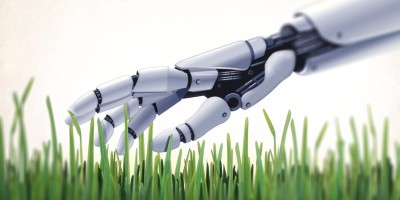Bidirectional neuromorphic brain interfaces, based on interconnecting brain networks with artificial spiking neural networks, aim to optimize neural prostheses to help people with paralysis to regain autonomy. Their emergence questions the concept of human subjectivation, the continuous process by which we become and remain the subject of our life.
References
Collingridge, D. The Social Control of Technology. (St. Martin’s Press, 1980).
Rouvroy, A. & Berns, T. Le nouveau pouvoir statistique. Ou quand le contrôle s’exerce sur un réel normé, docile et sans événement car constitué de corps « numériques »… Multitudes 40, 88–103 (2010).
Fourneret, E. & Yvert, B. Digital normativity: a challenge for human Ssbjectivation. Front. Artif. Intell. 3, 27 (2020).
Steinmetz, N. A. et al. Neuropixels 2.0: a miniaturized high-density probe for stable, long-term brain recordings. Science 80, 372 (2021).
Sharifshazileh, M., Burelo, K., Sarnthein, J. & Indiveri, G. An electronic neuromorphic system for real-time detection of high frequency oscillations (HFO) in intracranial EEG. Nat. Commun. 12, 3095 (2021).
Bernert, M. & Yvert, B. An attention-based spiking neural network for unsupervised spike-sorting. Int. J. Neural Syst. 29, 1850059 (2019).
Joucla, S. et al. Generation of locomotor-like activity in the isolated rat spinal cord using intraspinal electrical microstimulation driven by a digital neuromorphic CPG. Front. Neurosci. https://doi.org/10.3389/fnins.2016.00067 (2016).
Kwon, J. et al. Vertical nanowire electrode array for enhanced neurogenesis of human neural stem ells via intracellular electrical stimulation. Nano Lett. 21, 6343–6351 (2021).
Foucault, M. Du Gouvernement des vivants - Cours au collège de France (1979-1980). (EHESS, Gallimard, Seuil, 2012).
Parliament, E., Union, D.-G. for I. P. of the & Nevejans, N. European civil law rules in robotics. (Publications Office, 2016).
Acknowledgements
This paper was made possible by the French Agence Nationale pour la Recherche (www.anr.fr) under grant No. ANR-20-CE45-0005 (BrainNet project).
Author information
Authors and Affiliations
Corresponding author
Ethics declarations
Competing interests
The authors declare no competing interests.
Rights and permissions
About this article
Cite this article
Yvert, B., Fourneret, E. Neuromorphic brain interfacing and the challenge of human subjectivation. Nat Rev Bioeng 1, 380–381 (2023). https://doi.org/10.1038/s44222-023-00041-9
Published:
Issue Date:
DOI: https://doi.org/10.1038/s44222-023-00041-9
- Springer Nature Limited
This article is cited by
-
Prosthetic embodiment or what makes a limb part of your body
Nature Reviews Bioengineering (2024)


